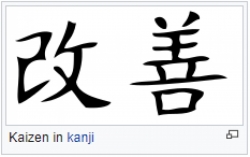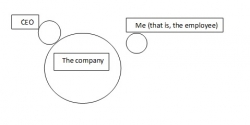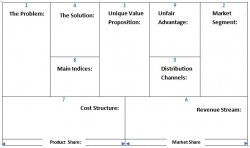We may often be faced with a specific problem, a breakdown. The breakdown may be in production, in purchasing, in sales or in any other realm. Our first goal is to resolve the problem: to find the reason, to come up with a solution and to carry on.
However, the failure often repeats itself. The desire to find a solution continues to drive us, and we immediately determine a new reason and a new solution.
But have we really addressed the root cause of the failure? And can we be sure that the failure won't repeat itself?
At one of the companies I worked with, a specific quality problem would occasionally arise on the surface of the product, and we had to either return the product for reproduction or reject it.
The production process was very complex and included manual labor and mechanical and chemical processing. Each time the same quality problem appeared, various solutions were immediately offered on a trial and error basis, until the problem disappeared and it seemed that we had successfully resolved it.
Until the problem reappeared, and again, through trial and error, we found a new solution for a brief time.
Had we really located the root cause of the problem and the solution to the reason for the root cause?
Apparently not.
At another company, a random flaw was detected in the final product. Although the flaw was detected totally by chance and not as a result of the production process or routine control procedures, we performed a swift investigation, found the "guilty" employee and scolded them.
Here too, an in-depth analysis to detect the root cause of the problem was not undertaken.
After a short while, we began to receive customer complaints on products they had received with the same flaw. Only then did we conduct an in-depth analysis, followed by a survey of the finished product warehouse to detect additional flawed products, and changes were made in the work method.
As a result, both production procedures and control procedures were adjusted.
The root cause
The root cause is the primary reason, the factor detected in the flaw at the root of things. If we find it, we can determine the appropriate solution and ensure that the failure won't repeat itself.
The Five-Why Method (or the 5 Why's) for Detecting Failures
One of the methods used to get to the root of things is called the 5 Y's or the 5 Why's. Ask yourself why over and over, five times, until you attain the root cause or you cannot go down any more levels in the in-depth investigation.
This method was first used at Toyota, where they found that statistically, 5 cycles will provide the appropriate solution, and no further investigation will add any essential information.
The technique is to ask why the failure occurred.
And then to ask again why the reason we found for the first "why" occurred, and so on.
It's like when a child asks us why. We provide some kind of answer, but it does not satisfy them, or it raises more questions, and they ask why again, over and over, until we find some way of silencing them….
An example of failure analysis with the Five-Why method
Phenomenon: The vehicle's battery is dead.
- Why is the battery dead?
- Why doesn't the alternator work?
- Why is the belt torn?
- Why has the belt's recommended life span expired by so much without being replaced?
- Why hasn't the vehicle been checked and maintained according to the calendar time recommended by the manufacturer?
Reason: The vehicle belongs to (is being used by) several people and nobody has been made responsible for the car and its maintenance.
Recommendation
I recommend withstanding the temptation to find quick, easy solutions and not to take shortcuts. When we encounter a failure, and particularly when the failure repeats itself, don't be satisfied with solutions pulled from a hat. Get to the root cause of things and create a solution that applies to the root cause.












 My First Book: Manage! Best Value Practices for Effective Management
My First Book: Manage! Best Value Practices for Effective Management